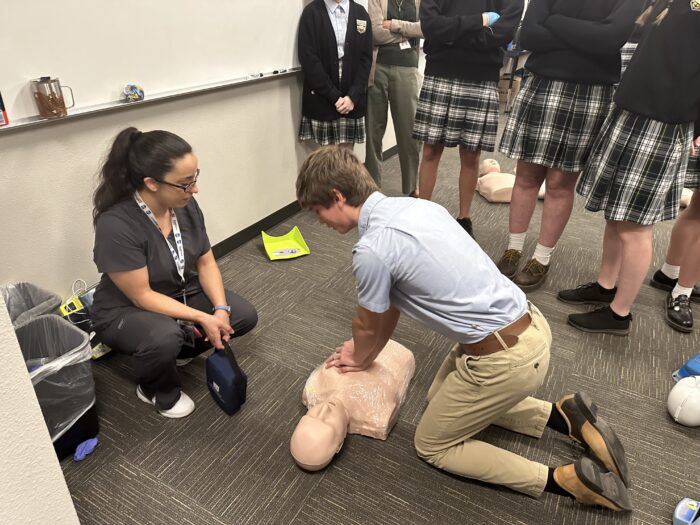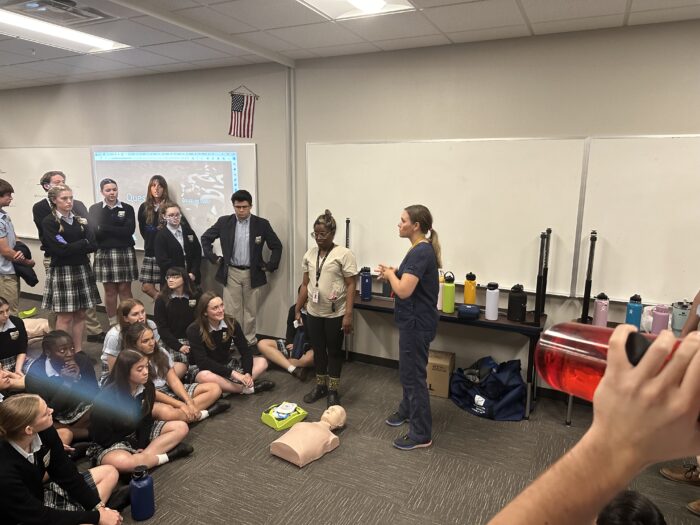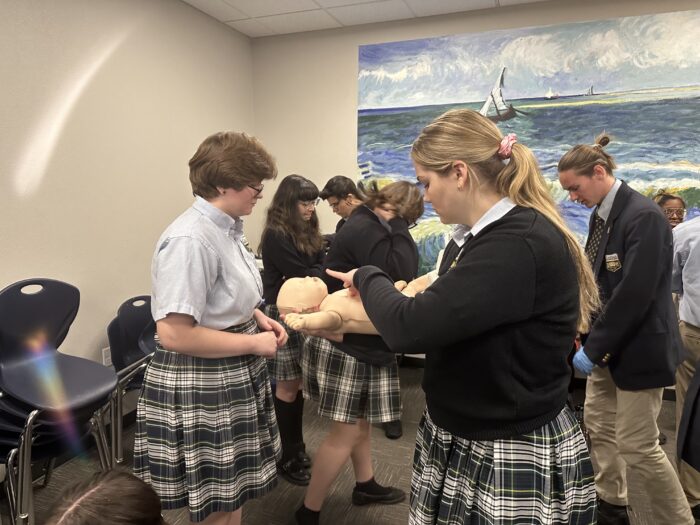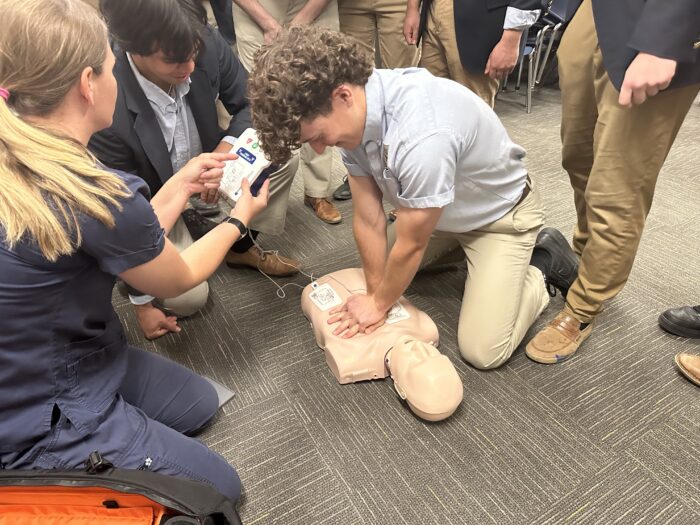Great Hearts Seniors Learn Lifesaving Skills Before Graduation
Great Hearts Academies May 28, 2024 -
At Great Hearts Arizona academies, our seniors take some time out of one of their school days before graduation to not only receive required training, but also to prepare themselves to help in emergency situations.
Arizona has made it mandatory for high school students to learn Cardiopulmonary Resuscitation (CPR) before they can graduate. This rule started in the 2019-2020 school year, making Arizona one of 41 states requiring CPR certification for high school graduation. According to the law, Arizona high schools must teach CPR to students at least once between grades seven and twelve.
CPR is a life-saving technique used in emergencies when someone’s heart stops beating. Performing CPR can double or even triple a cardiac arrest victim’s chance of survival. Statistics show that immediate CPR from bystanders can significantly improve outcomes until professional help arrives.
Nurse Wrublick, a school nurse at the Great Hearts Lincoln campus, and a dedicated team of school nurses from the Great Hearts Arizona network travel from academy to academy to work alongside our great-hearted seniors and teach them these skills with a “hands-on” approach.
“We want everyone to just keep it simple,” said Wrublick. “Do something rather than nothing, and you’re always going to want to call 9-1-1 to get help right away if you can.”
Wrublick explained that the training covers the basics of CPR, including how to do chest compressions and respond in emergencies. “The students learn all about CPR, how to do it, how to help. They also learn a little bit about first aid and a little bit about AED (Automated External Defibrillator) use.”
Each student practices as a group and then individually with an adult CPR mannequin and an infant mannequin. After a simulation has been demonstrated, they learn how to approach an emergency, how to call for help, and how to administer CPR, all while being supervised and prompted by the nurse situated right next to them, kneeling on the floor. They also get to use an AED device on the mannequins to familiarize themselves with the lifesaving units in real time.
“I have been blown away,” said Wrublick. “They’ve been so respectful. They really have just been ready to learn, eager to learn, and absorbing the information. They just want to know what they should do, and they have a lot of great questions and they’re really involved with us.”
One senior shared her experience, “I feel much more confident now,” shared one senior about her experience. “I never thought I’d need to know CPR, but now I know I can help someone in an emergency.”
The CPR training requirement for high school graduation is an important step toward creating a safer and more prepared society. By teaching young people life-saving skills, the school nurses at Great Hearts are enhancing the safety of the community and encouraging a sense of responsibility and readiness in this next generation.
“Great Hearts has been phenomenal. They really see the value and the importance of having them be CPR certified, and that’s just a great way that Great Hearts gives back to their students,” concluded Wrublick.
Do you have a story or know of a story that you would like to see featured at Great Hearts? Please contact jmoore@greatheartsamerica.org.



